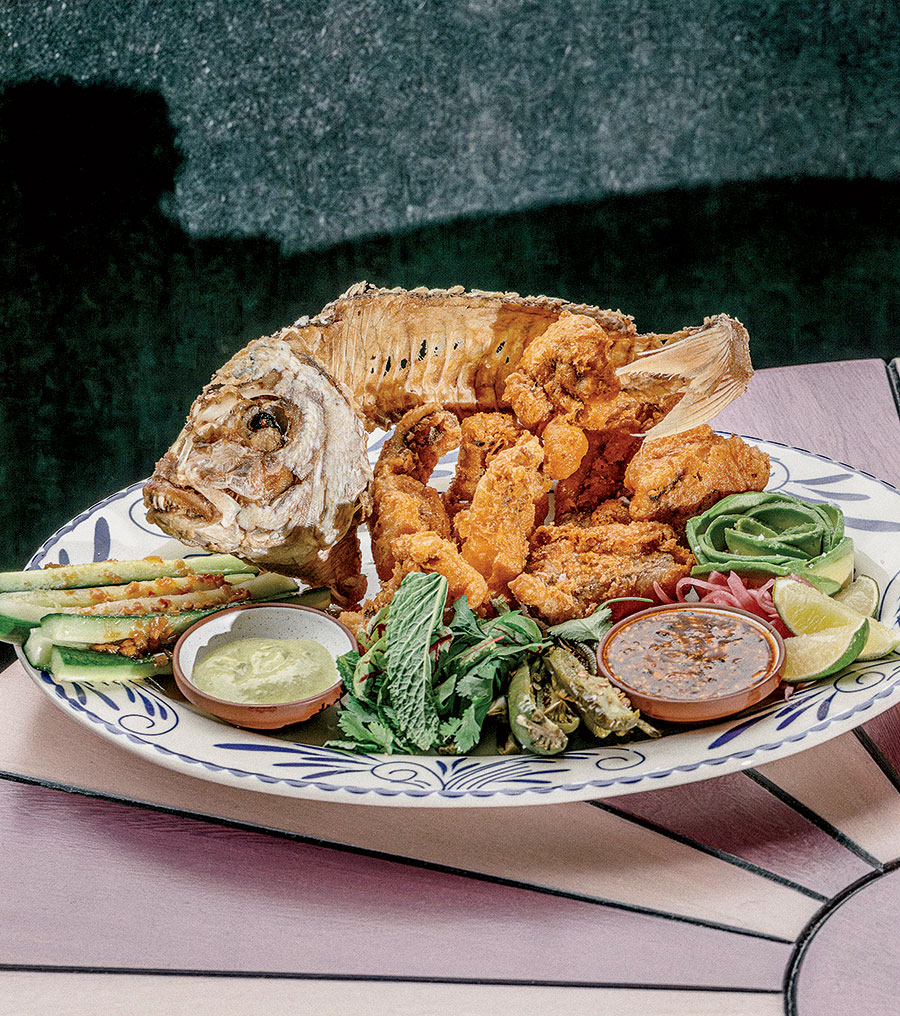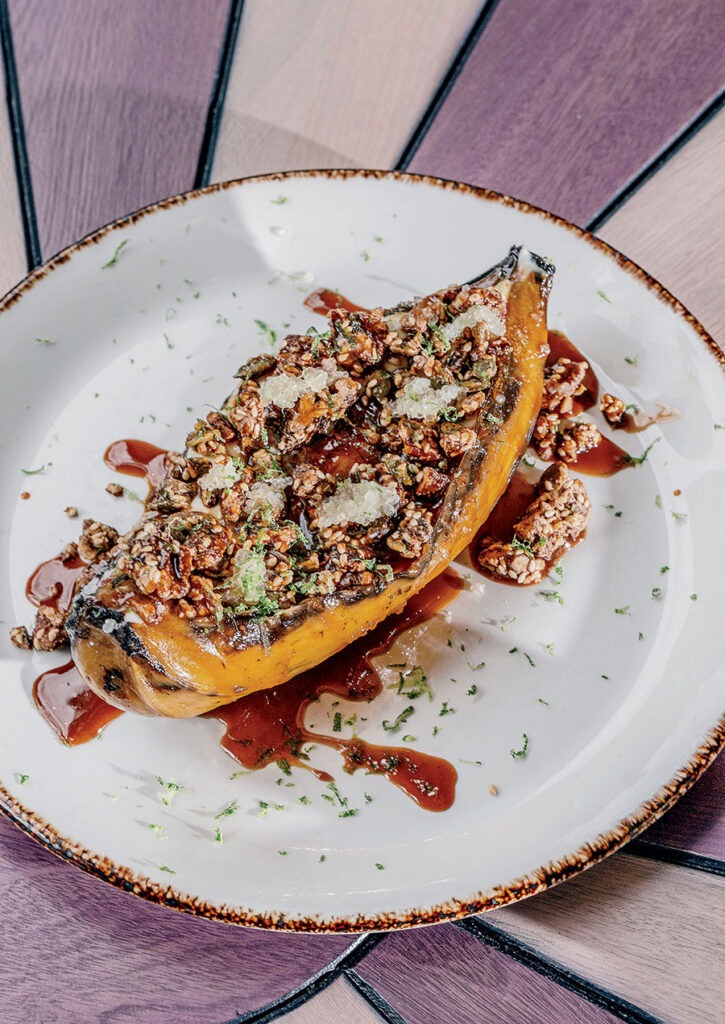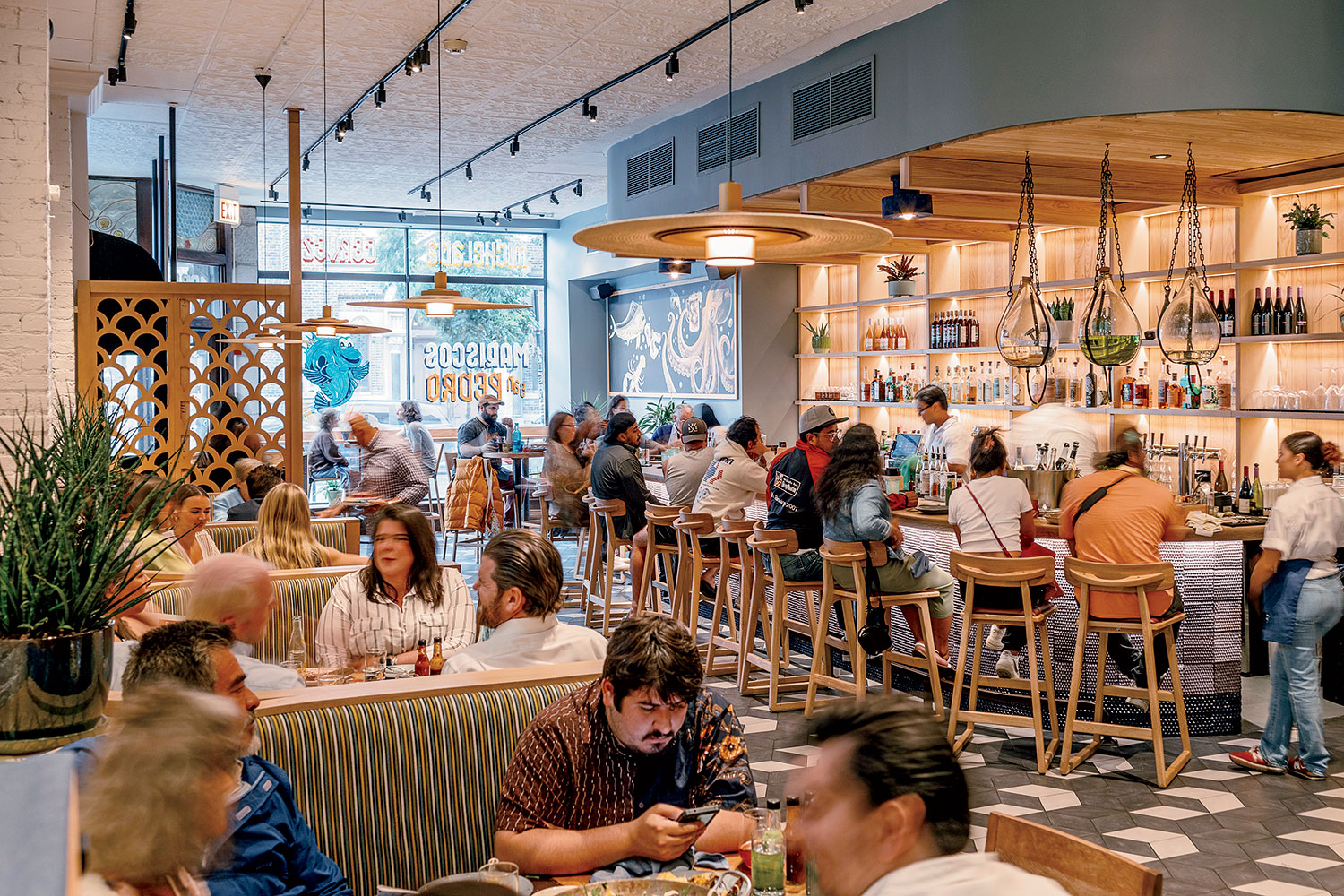Mariscos San Pedro, a Mexican seafood restaurant in Pilsen, has three sister spots around the city: Le Bouchon, a much-loved French bistro in Bucktown; Taqueria Chingón, a Logan Square counter-service spot for inventive tacos; and Obélix, a River North showcase for global flavors grounded in French cooking. They’re not so much a restaurant group as a restaurant collective — the Wu-Tang Clan of Chicago dining.
The chefs of this collective are many, and they bring their personal heritage — French, Mexican, Korean, Italian — to the table. Yet what they mostly have in common is that they’re natives of the city, and their cooking, however eclectic, tastes specifically of an emerging Chicago style. (More on this later.) The three principals are Oliver Poilevey, whose parents opened Le Bouchon more than 30 years ago; Marcos Ascencio, the chingón in chief, whose tacos break all the rules; and Antonio Incandela, the group’s head pastry chef, who brings a baker’s craft to both sweet and savory dishes.
When these three get together, you can taste the collaboration in their food, as well as the joy and sense of place. So far, I love what they’re doing at Mariscos San Pedro, which they opened in June. Maybe that’s because I love Mexican flavors, seafood, Pilsen, and cooking that vibes to its own plunked-out tune even if every dish isn’t a roaring success. That’s me. You? Maybe you’ll be less forgiving of the mash-ups that don’t quite work, execution inconsistencies, and service fumbles. I wish there were fewer issues keeping this restaurant from reaching its potential, yet I left each meal eager for another.
Remember Dusek’s, the handsome, somberly lit tavern that previously occupied this turreted corner of Thalia Hall? You won’t believe what they’ve done with the joint: opened it up, splashed it in color, and made it feel of a piece with the Mexican Pilsen of today rather than a reminder of its Czech past. Come early to sit at the inviting bar, stretching along the front room, and sip a Verdita Swizzle, herbaceous with cilantro, mint, and Chartreuse. I’m happiest here, drinking a Pacifico michelada garnished with an oyster and eating shrimp gobernador tacos, their gushy insides enrobed in caramelized cheese and tucked into tortillas with pickled onion and avocado.

Ascencio, whose fingerprints are the most apparent on the menu, explained his flavor-building strategy to me this way: “There’s something creamy, something salty, something sweet, something acidic, and something crispy-crunchy.” It’s maximalist, and when it works, you swoon. His snapper ceviche, in a yellow Peruvian pepper sauce, features apples, hot chile, taro, coconut, deep-fried lentils, and a frizzy fright wig of fried ginger threads. It’s electric. Milder but no less freaky good is his kampachi aguachile with compressed watermelon, licorice-tinged hoja santa, and Sungold tomatoes in a tomato-red broth. A tostada with fresh sardines over pistachio mole and dotted with golden raisins is exciting if less successful, since the fish tastes bitter.
The menu is divided into unusual categories like “Tostadas,” “Masa y Más,” and “Whole Fish,” so you order and let the kitchen course the meal. We assumed the dish called Big Al Nopales (devised by sous chef Alex Martinez) would be a side dish, not a bubbly crock of queso shot through with roasted cactus and chile. No complaints! It comes with totopos and a trio of house salsas, including a stupid-good salsa negra with Worcestershire, chile crisp, black garlic, and a zillion other ingredients. Wood-fired shrimp sound like an entrée for one but are so inviting to pick at in their heat-blistered shells they’re best to share.
Order these shrimp with the whole Gulf snapper, its deep-fried frame curled around hunks of tender battered flesh, and you will sail into the pescetarian pleasure palace. The snapper comes with a basket of excellent corn tortillas (made from masa ground in-house) and fistfuls of herbs, pickled onions, avocado slices, salsa macha, and other goodies to taco-fy.
I wish they had thought to offer eight tortillas instead of seven for the four of us at the table, and I doubly wish it hadn’t taken an eon and two reminders to get more. Servers seem overwhelmed, and it can be hard to get water, the check, the right check, any answers to questions, et cetera. I got a little foodie-snitty when one server said the fresh oysters would be Atlantic, then served Pacific ones (a different species, different taste) and didn’t appear to care when we informed him.
Another problem: Sometimes the execution is clumsy, a concern with dishes this original. Attempting a cornmeal-battered oyster taco with céleri rémoulade is a stretch to begin with, and the result is a flop: The mealy hush-fishies are all breading. Nor did I like a $29 tostada with raw tuna, kampachi, salmon roe, and weepy lobes of past-its-prime uni.

I can’t stay mad at this food, though, because I taste the love in it. Nowhere more so than at the end of the meal. Good lord almighty, the desserts here are one jolt of bliss after another. How about a blue corn macaron filled with corn cream and cassis jam so on the edge between savory and sweet that you can will it in either direction? Or a roasted plantain that’s earthy and sophisticated, served in its husk with cajeta and ricotta-like requesón? And the house paletas, particularly the guava-rose, demand wider distribution.
There’s something happening in Chicago now. Poilevey, Ascencio, and Incandela are at the heart of it, along with John Manion (Brasero, El Che Steakhouse & Bar) and Erling Wu-Bower and Chris Jung (Maxwells Trading). It’s a happy food movement, a spirit of exuberant joy in restaurants where you can go big or just crush some oysters and tacos, where cultural boundaries blur and high-end culinary training is employed in service to easy pleasures. After so many years of modernist high jinks, it feels like Chicago’s dining scene is finally starting to relax.



